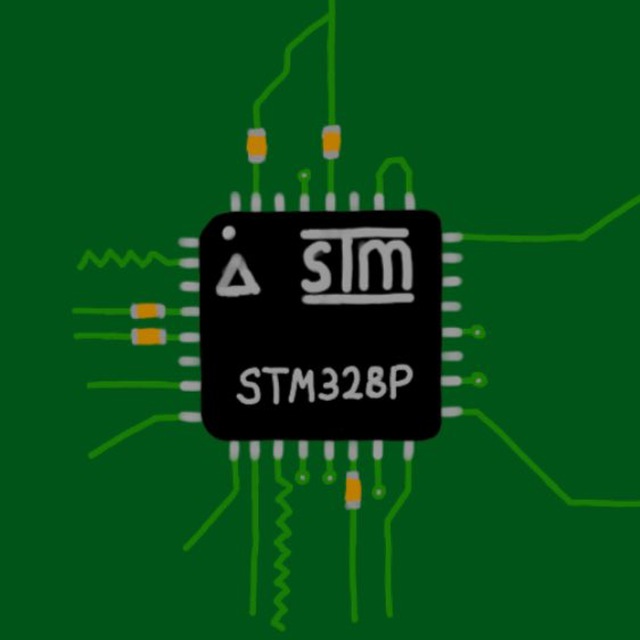I
Size: a a a
2021 April 29
Несколько устройств если будет то видимо просыпаться и слушать мастера. Как то так, а мастер уже будет определять кому говорить
I
Надо померить токи потребляемые. Что выгоднее срать в эфир или слушать
E
ну мне кажется очевидно, что передача затрачивает много мощности
E
тут просто частично вопрос вкуса / стоимости / железа / условий
E
Technical information
ANT can be configured to spend long periods in a low-power “sleep” mode (consuming of the order of microamps of current), wake up briefly to communicate (when consumption rises to a peak of 22mA (at -5dB) during reception and 13.5mA (at -5 dB) during transmission)[5] and return to sleep mode. Average current consumption for low message rates is less than 60 microamps on some devices.[5]
Each ANT channel consists of one or more transmitting nodes and one or more receiving nodes, depending on the network topology. Any node can transmit or receive, so the channels are bi-directional.[6]
ANT accommodates three types of messaging: broadcast, acknowledged, and burst. Broadcast is a one-way communication from one node to another (or many). The receiving node(s) transmit no acknowledgment, but the receiving node may still send messages back to the transmitting node. This technique is suited to sensor applications and is the most economical method of operation.[6]
Acknowledged messaging confirms receipt of data packets. The transmitter is informed of success or failure, although there are no retransmissions. This technique is suited to control applications.[6]
ANT can also be used for burst messaging; this is a multi-message transmission technique using the full data bandwidth and running to completion. The receiving node acknowledges receipt and informs of corrupted packets that the transmitter then re-sends. The packets are sequence numbered for traceability. This technique is suited to data block transfer where the integrity of the data is paramount.[6]
ANT can be configured to spend long periods in a low-power “sleep” mode (consuming of the order of microamps of current), wake up briefly to communicate (when consumption rises to a peak of 22mA (at -5dB) during reception and 13.5mA (at -5 dB) during transmission)[5] and return to sleep mode. Average current consumption for low message rates is less than 60 microamps on some devices.[5]
Each ANT channel consists of one or more transmitting nodes and one or more receiving nodes, depending on the network topology. Any node can transmit or receive, so the channels are bi-directional.[6]
ANT accommodates three types of messaging: broadcast, acknowledged, and burst. Broadcast is a one-way communication from one node to another (or many). The receiving node(s) transmit no acknowledgment, but the receiving node may still send messages back to the transmitting node. This technique is suited to sensor applications and is the most economical method of operation.[6]
Acknowledged messaging confirms receipt of data packets. The transmitter is informed of success or failure, although there are no retransmissions. This technique is suited to control applications.[6]
ANT can also be used for burst messaging; this is a multi-message transmission technique using the full data bandwidth and running to completion. The receiving node acknowledges receipt and informs of corrupted packets that the transmitter then re-sends. The packets are sequence numbered for traceability. This technique is suited to data block transfer where the integrity of the data is paramount.[6]
E
алсо имейте в виду, что нордик не рекомендует чип для новых дизайнов
I
Не факт. Мне попадались приемники хавающие как не в себя
I
Знаю. У меня их десяток. Нормально. И там у них еще чтото типа 24l01
E
ну это чисто теоретически. я так понимаю выше указано потребление целого мк не в спячке. иначе это трудно объяснить.
E
конечно ламповый приемник может хавать больше, чем баофенг на передаче
E
алсо. когда разбор деу? (:
I
Вот и мне трудно. Но факт. Батарейный передатчик из комплекта, живет 4 часа а приемник час
E
китайдуино?
I
Не до него сейчас
I
Неее вполне профессиональная, дорогущая железка
E
они говорят на 52 серию идите
I
В железке уже стоит 2401. Просто отключена в прошивке. Скажем ставилась на развитие
I
Сейчас захотели немного расширить возможности железяки, добавление внешнего блока
E
фсб попросило?
I
Не знаю дойдут ли вообще руки. Работы море да и дитя требует



